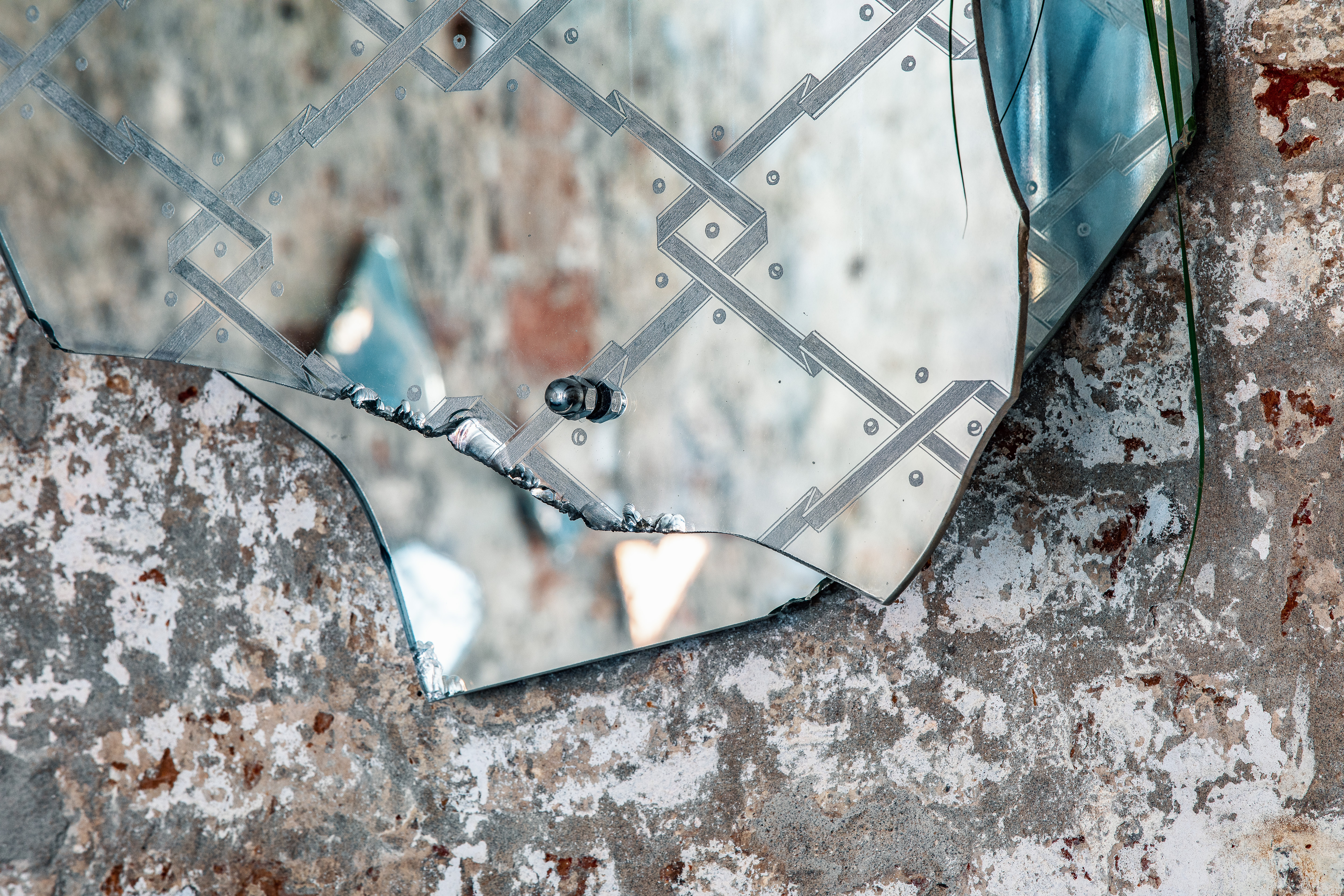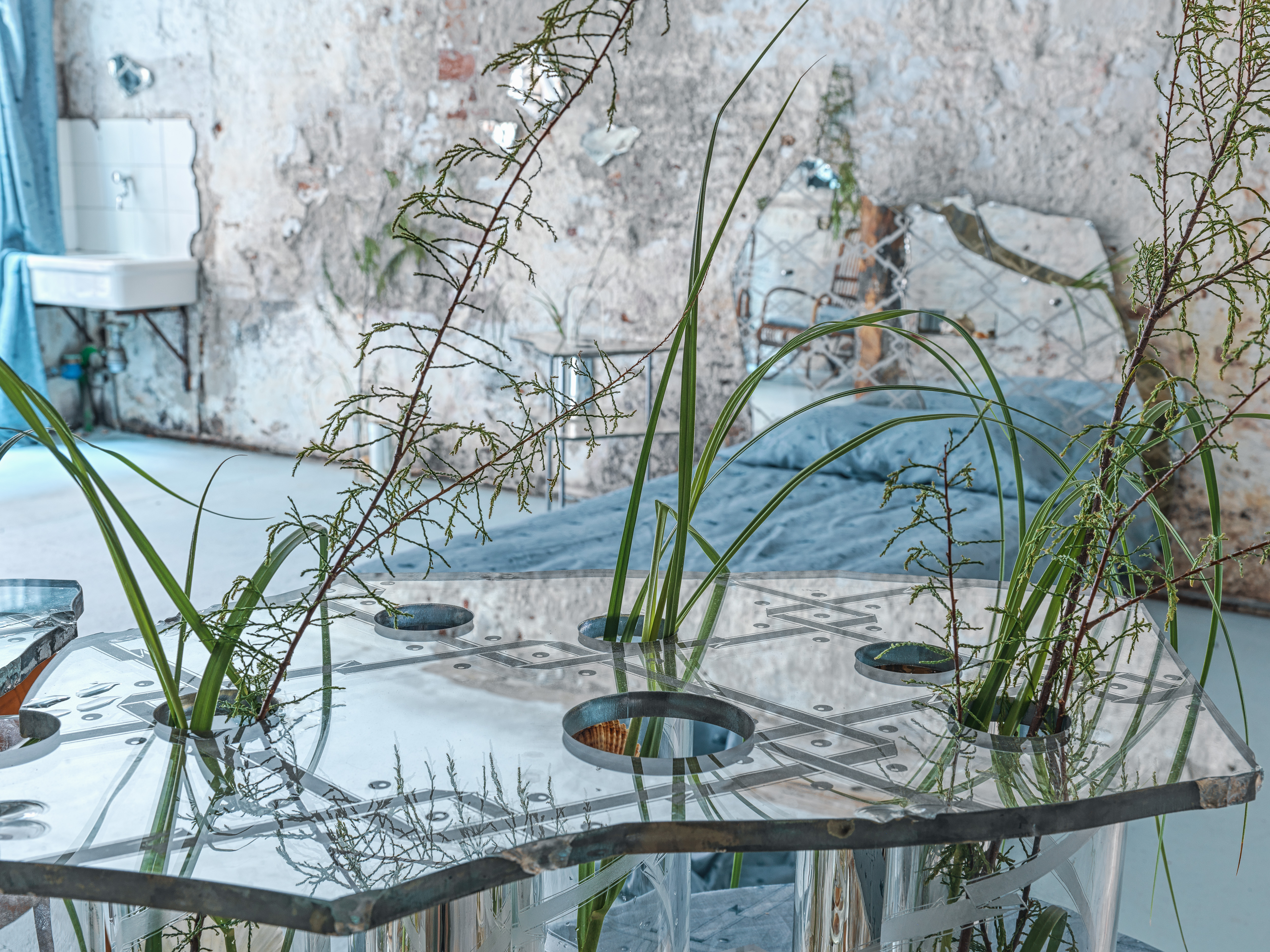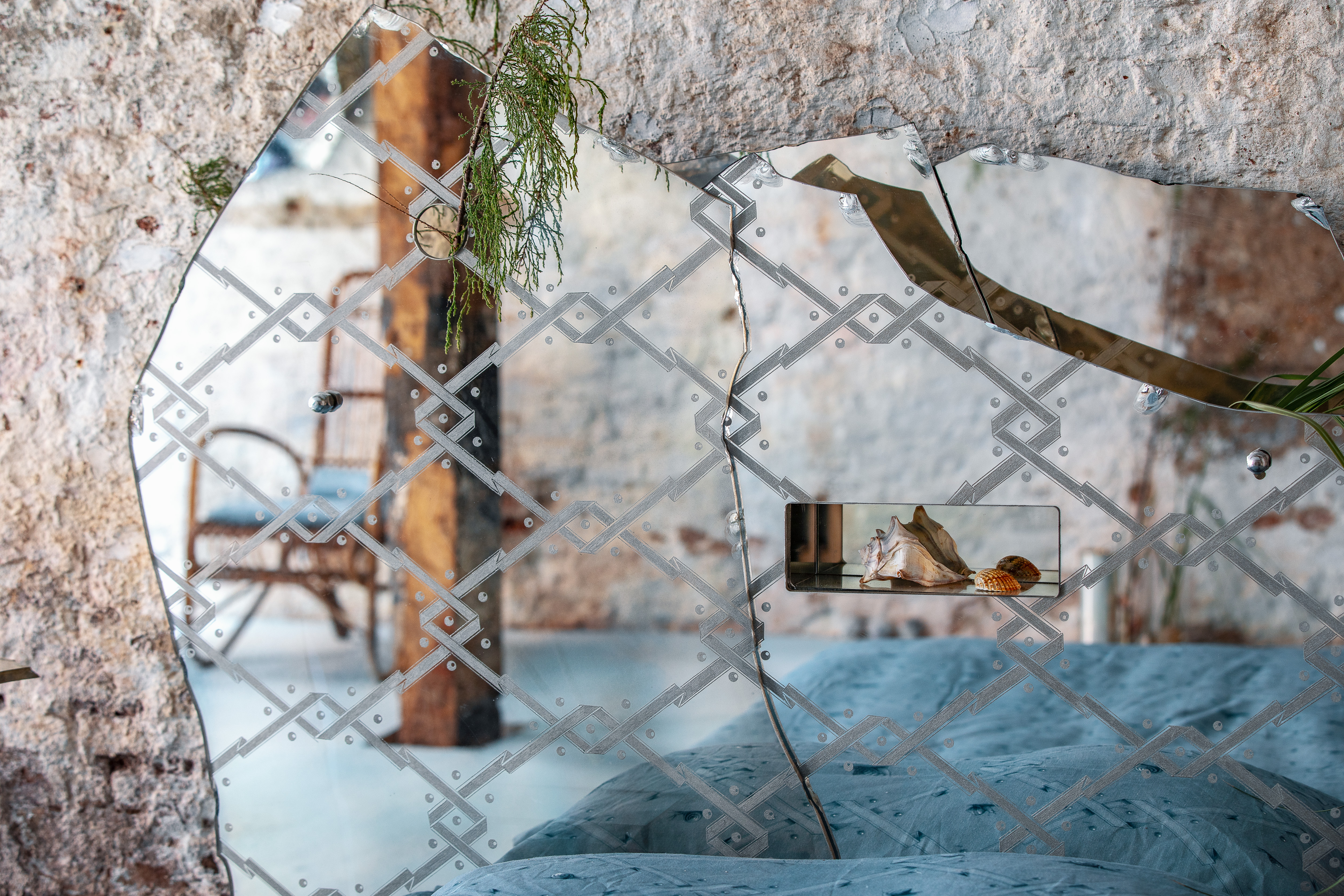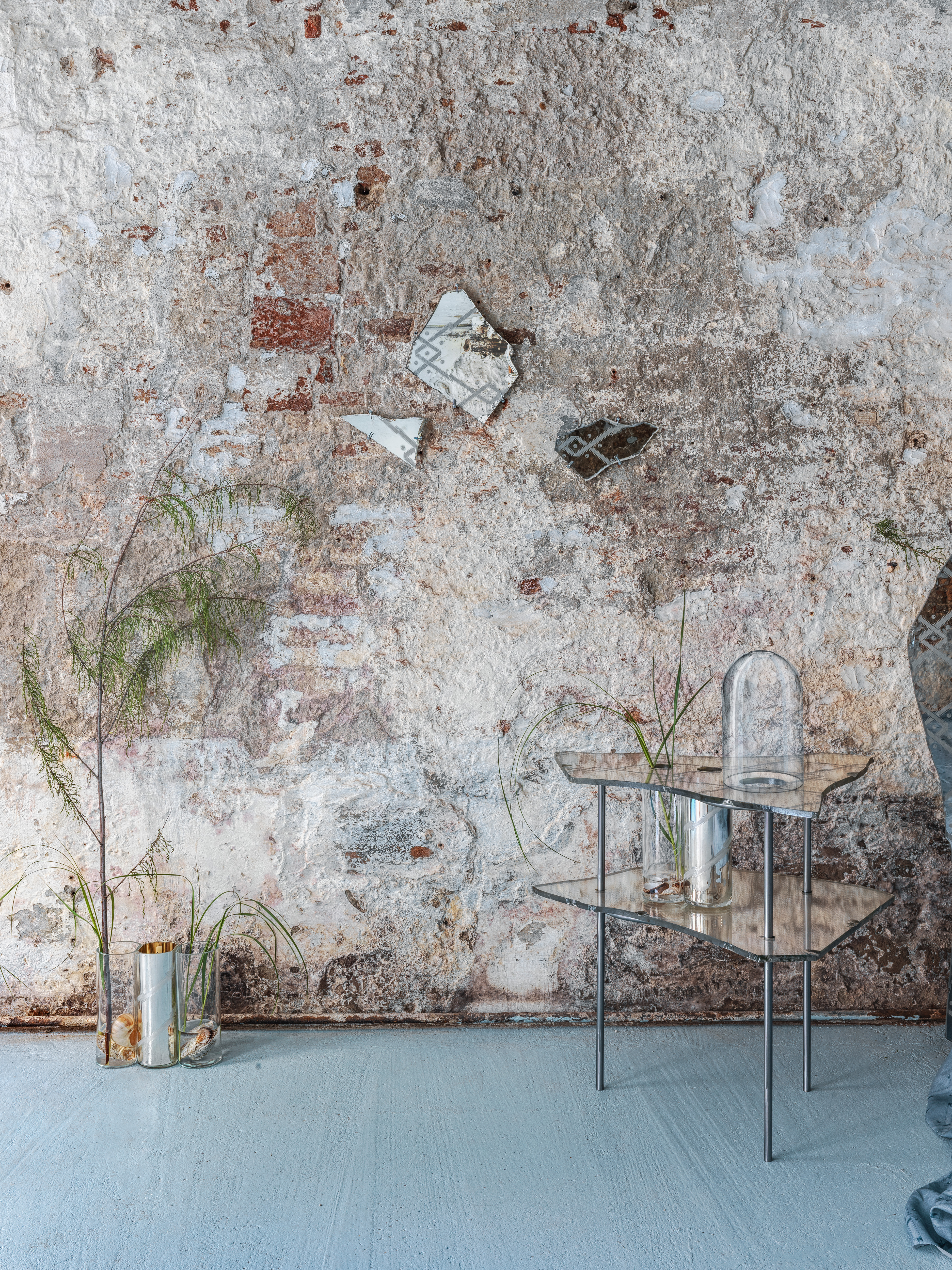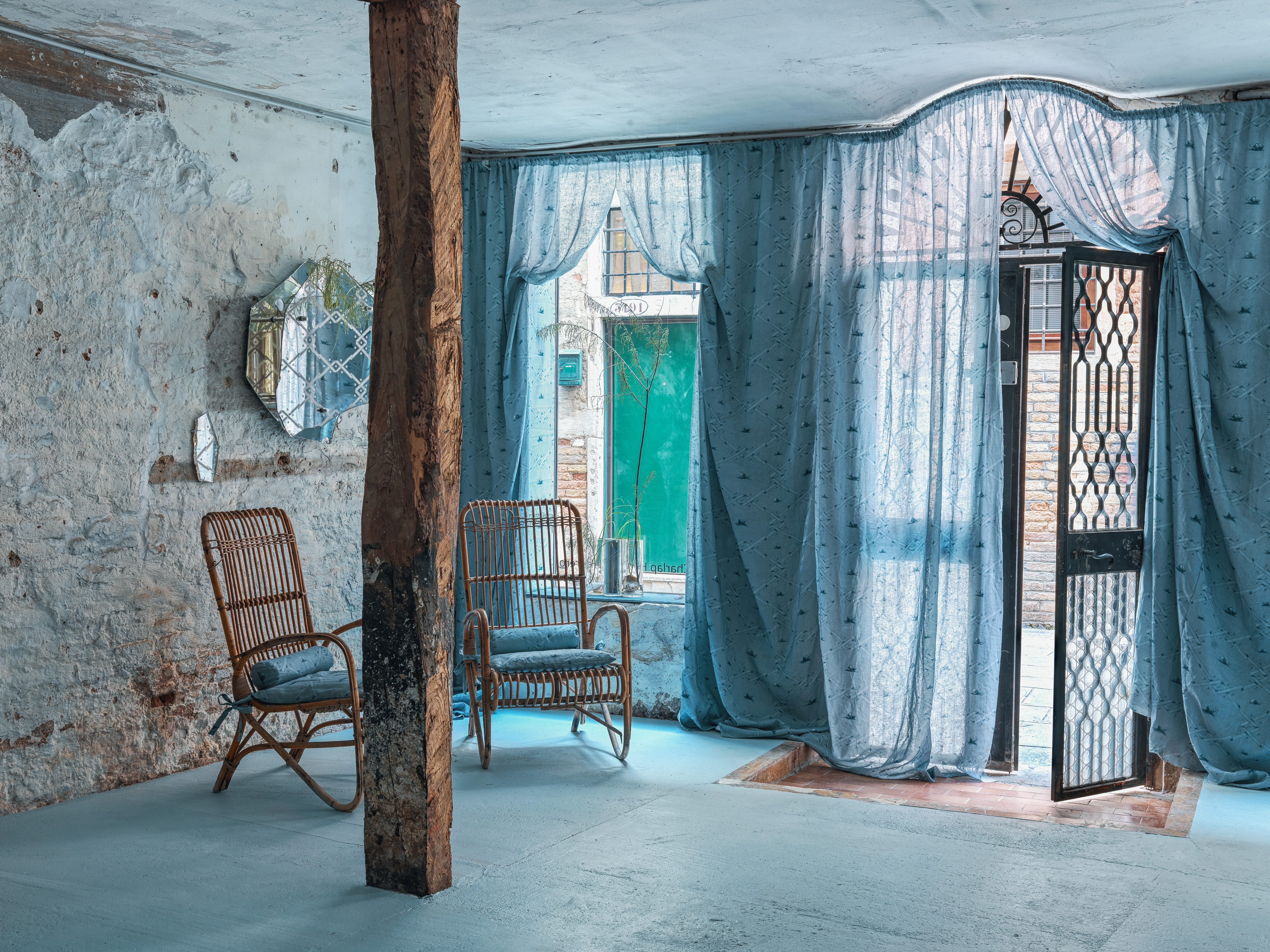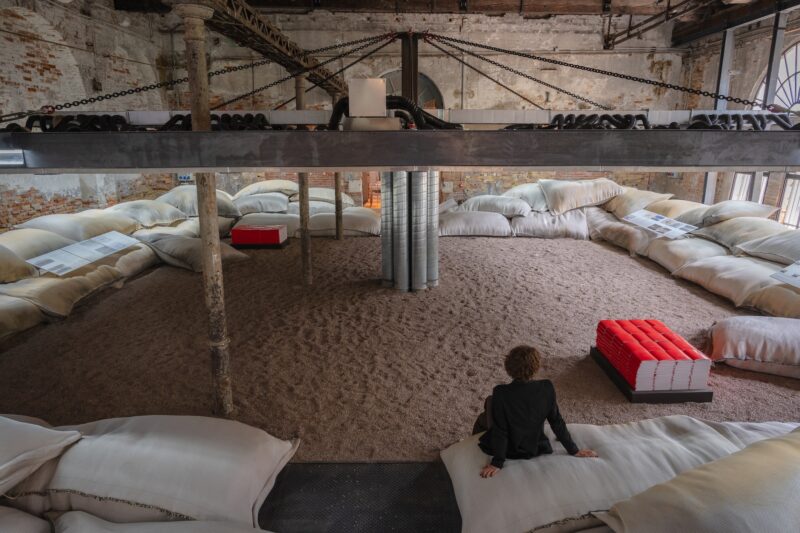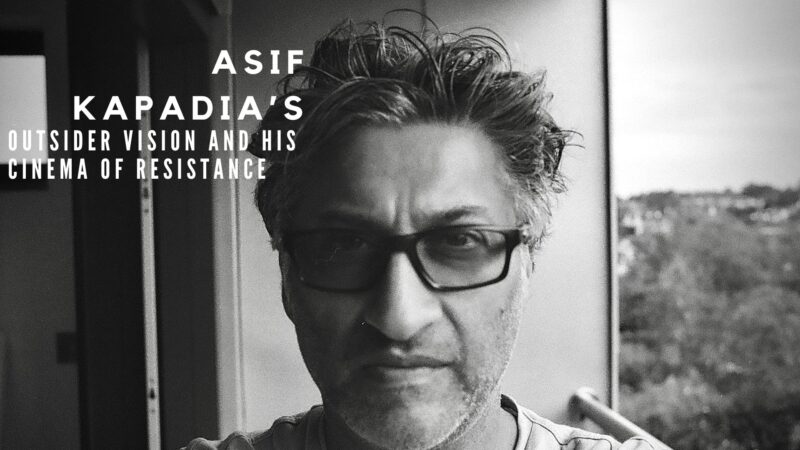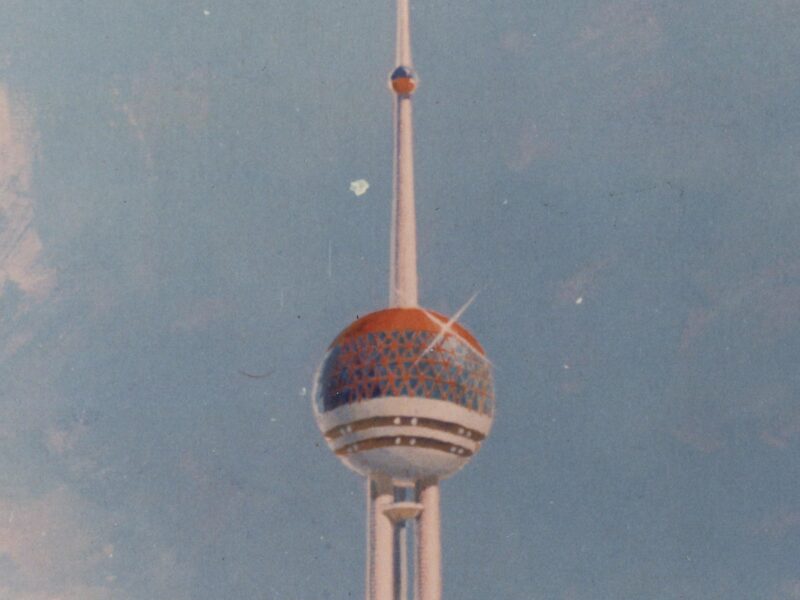ALMA ZEVI Projects presents Charlap Hyman & Herrero’s debut solo show Ouvrez-moi. Organized by Clara Zevi, it takes the spectators into a parallel mindset.
 Charlap Hyman & Herrero at ‘Ouvrez-moi’. Photograph by Enrico Fiorese
Charlap Hyman & Herrero at ‘Ouvrez-moi’. Photograph by Enrico Fiorese
The site-specific installation dialogues directly with the Venetian past and heritage. It comprises of a series of new works produced in Murano, the island’s glass-heaven. For the exhibition, Clara Zevi called architects Adam Charlap Hyman and Andre Herrero (CHH) to turn a bygone mirror workshop into a quasi-surreal bedroom. The architectural duo, both 29 years old, live and work between New York and Los Angeles. They certainly found a huge inspiration in these rustic walls, surmounted by a cast in plaster of Beethoven’s Death Mask, which belonged to the previous owners on the mirror factory.

An oneiric landscape, set, indeed, in a bedroom, seemed the most logical response to such an evocative space. The walls of the defunct laboratory are grainy and have a rough appearance. “If you look upon an old wall covered with dirt, or the odd appearance of some streaked stones, you may discover several things like landscapes, battles, clouds, uncommon attitudes, humorous faces, draperies, etc.” remembered Breton in the Surreal Manifesto, going back to Leonardo da Vinci. In Venice, the dusty bricks gave birth to an organic dream-scape, framed by the polyvalent life of the shattered mirror.
The title, Ouvrez-moi, is borrowed from Jean Cocteau’s script from his 1932 movie The Blood of a Poet; another surrealist bell. The film resonates particularly with CHH’s practice, and its influence is everywhere felt in their Venice exhibition. In one of the film’s scenes, an archetypal artist-in-crisis exhorted by a speaking statue to walk through the mirror.“Ouvrez-moi!”, open up, he commands. And nothing happens– the only way out is physically (and maybe even mentally) through the looking glass. Scared, the artist throws himself against the reflective surface, which magically transforms into a watery, permeable entryway. The reflecting surface shatters completely.
In Venice, a similarly giant etched mirror welcomes visitors into the room. This has been cracked into shards, and then reassembled into a series of intricate pieces of reflective furniture. A remnant becomes the head of the bed; another one a double-layered structure holding some lagoon plants; yet another one turns into an irregular mirror on the irregular wall. Looking closely, you can see sea-shells nestled inside, and snails wandering around, reenacting a typical Venetian habitat.
In this liminal space, fractured and cavernous, intimate but open to the public, CHH invites visitors to explore perceptual illusions constructed with duplications and translucencies. The furniture, textiles and natural artifacts in this exhibition come together to form a still life: part dead, part alive, part natural, part manmade.
CHH collaborated with local craftsmen in Murano to produce this body of new work that draws on Venice’s rich history of mirror making, and brings the art form into a contemporary context. Each piece of furniture in CHH’s installation incorporates a sheet of two-way mirror in front of a sheet of one-way mirror. Candles and flora and fauna from nearby lagoons live between the two panes. When the candle is lit, the flame activates the translucency of the two-way mirror and creates infinite reflections of the contained ecosystem. When the candle goes out, the viewer is faced with their reflection. Glass becomes mirror and the illusion vanishes.
CHH’s research into 17th century mirror production, grottos and Italian Novecento architecture is at the core of Ouvrez-moi. On the reflective panes, a geometric design is interlaced. The same can be noticed in the embroideries on the long, semi-transparent curtain that cover the entry-wall. The pattern interprets the soft but geometric design found on the underbelly of Milan’s Palazzo della Società Buonarroti- Carpaccio-Giotto with sliding snails in a lattice of interlocking ribbon. This reverberates throughout the exhibition, confusingthe distinction between a fleeting reflection and a permanent imprint.
While the artist in The Blood of a Poet slips through the looking glass into another world, Ouvrez-moi engulfs visitors into a microcosmic grotto. This installation, made using Venetian materials is a space for private play or contemplation, the erotic or the sacred, and is a place that temporarily permeates the threshold of reality. ephemeral and at the same time grounded in an extensive research into the past and heritage of the city, it act as a catalyst for discovery and reflection.
Ouvrez-moi ALMA ZEVI Projects– San Marco 3208, Salizzada Malipiero, Venice
3 May – 6 July 2019

